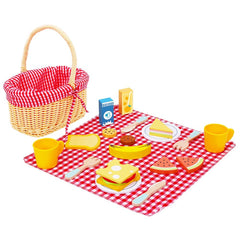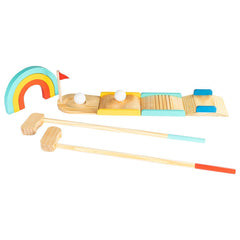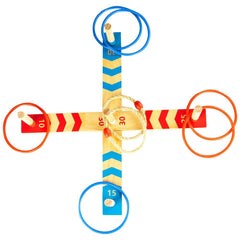Children learn best when they use their hands, move their bodies, and explore the world around them. A mud kitchen allows them the perfect space to do just that. Whether placed in the backyard, garden, or patio, garden kitchen toys like these offer rich learning experiences through play.
A mud kitchen lets children play with soil, water, and simple tools, familiarising them with nature. But that’s not all — it also offers many other benefits. Let’s take a look!
1. Builds Fine Motor Skills
Mud kitchen demands kids to undertake simple actions such as scooping mud, pouring water, turning knobs and lifting pans. It makes their fingers and hands strong. Further, actions like stirring and mixing improve their grip and coordination.
Larger movements like bending, lifting, walking, and reaching help kids with balance and full-body coordination. Regular play in a mud kitchen boosts both fine and gross motor skills — no lessons needed, just play!
2. Supports Sensory Development
Outdoor kitchen toys naturally invite sensory experiences. Mud kitchens, in particular, encourage children to feel textures, smell soil, watch water flow, and listen to splashes and taps.
Sensory input is important in the early years. It helps the brain understand how the world works and improves focus, curiosity, and calmness. It also gives kids a calming experience while letting them spend time in nature.
3. Encourages Imaginative Thinking
A child doesn’t need real ingredients to make a pretend meal. Leaves become lettuce, mud becomes chocolate, and stones turn into cookies.
This type of pretend play improves imagination and the ability to think creatively. Children begin to understand symbols — one thing standing for another — which is the foundation of early learning in reading, maths, and storytelling.
With garden kitchen toys, children create their own stories. Occasionally they pretend to run a café, and other times, they’re busy being bakers. Taking up such distinct roles makes them aware of the workings of different jobs.
4. Improves Communication Skills
Many children can play together with the mud kitchen. When they do so, they discuss what they are making, instruct and ask questions of each other. It makes them gain better communication skills as they learn how to speak, listen, and respond.
Even solo play builds language. A child might speak to themself while cooking, naming ingredients or actions.
5. Aids Emotional Development
Mud Kitchen carves a soothing space, perfect for letting children feel open enough to express feelings. It also gives children the time they need to process their thoughts and release tension.
Outdoor play also gives children a sense of independence by making them take charge of how they play. Kids generally love this validation because it boosts self-esteem and makes them feel capable.
Even if they make little mistakes, they learn how to face such situations where they fail. So, even if they spill water or mix the wrong things, don't worry!
6. Teaches Early Problem-Solving
When you get a mud kitchen, be prepared because things might not always go as planned. Certain situations might arise where the water might run out or the spoon might not fit in the pan.
These challenges let your child think and come up with a solution. If their solution does not fit, they change their approach to find a better one. It proves how a simple mud kitchen can teach kids not to give up easily and to try again.
7. Promotes Social Interaction
A mud kitchen is perfect for group play. Many children can use it at the same time. But to do that, they need to take turns, share the tools, and talk to each other about what to do next. It helps them learn patience, teamwork, and fairness.
They also learn how to handle small problems. For example, if one child wants the tap and the other wants the pan, they talk it out and try to find a solution. It teaches them how to express their needs and listen to others.
These simple moments help children build social skills. It prepares them for school, clubs, or any group activity where they’ll need to work with others and understand different points of view.
Why Outdoor Play Matters More Than Ever
In today’s screen-filled world, outdoor play is becoming rare. Children spend less time outside, even though it’s vital for health and well-being. A mud kitchen encourages time away from devices. It brings children closer to nature and gives their minds space to breathe.
Outdoor settings reduce stress, support stronger immune systems, and improve sleep patterns. When children play with outdoor kitchen toys, they gain all these health benefits while also learning through active exploration.
How to Encourage Daily Use of the Mud Kitchen
Place the mud kitchen somewhere your child sees daily — near the garden path, beside a playhouse, or close to the patio. Keep tools, trays, and bowls handy in a basket or crate. Fill the water tank or working tap regularly to make sure it’s always ready.
Rotate the “ingredients” every few days. Offer flower petals, leaves, sticks, or water. Change the theme: today it’s a soup kitchen; tomorrow it’s a science lab. These small changes make the play captivating without adding pressure or cost.
At Barnshenn, we design mud kitchens that are ready for daily use and easy to maintain—making it simpler for parents to set up a routine that grows with the child.
Final Thoughts
A mud kitchen is more than just a backyard toy. It’s a space for creativity, movement, and learning. From building motor skills to developing language and social understanding, this one setup supports many areas of a child’s growth.
Whether used alone or with siblings and friends, it brings meaningful experiences into your child’s outdoor time. With the right accessories, sturdy design, and a working tap, the mud kitchen becomes a valuable part of everyday learning.
To explore thoughtfully crafted garden kitchen toys, visit Barnshenn and discover outdoor setups that grow with your child.
FAQs –
1. What age is suitable for a mud kitchen?
Ans: Mud kitchens are generally best for children aged 1.5 years and above. Younger children may need more supervision, but the setup works well into early primary years.
2. How can I keep the mud kitchen clean?
Ans: Rinse tools and surfaces with water after play. Use mild soap if needed. Store smaller items indoors or in a closed container to avoid dirt build-up.
3. Can I use the mud kitchen in winter?
Ans: Yes. Children can still enjoy the kitchen in colder months with gloves and warm clothes. Just avoid icy water or frozen taps.
4. Do mud kitchens need a water supply?
Ans: Some models come with working taps connected to a small tank or garden hose. You don’t need full plumbing. A simple refill system is enough for daily play.





